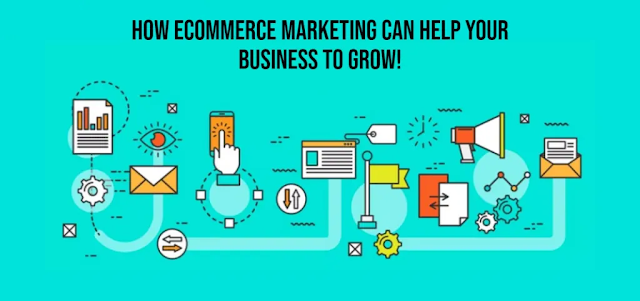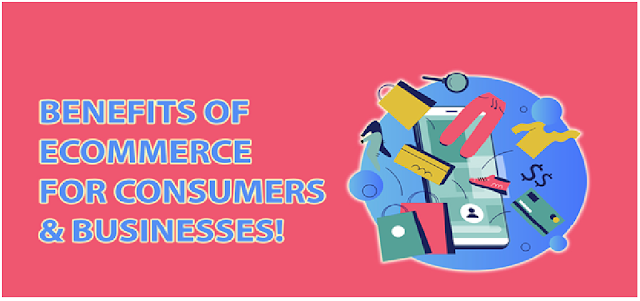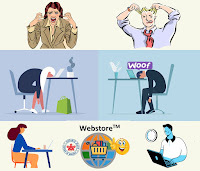Employees who return to the office after a year of remote work are not the employees their managers recall. They have spent more than a year acclimating to a rhythm that is drastically different—both in their personal and professional life. They have changed their working hours and developed their independence in task management. They may value family time or personal priorities more, and they may have had a loss or health issues that have permanently altered them. Many people now demand more control over how, when, and where their work gets done after a year of working alone, as well as more autonomy in relation to their bosses and organisations.
It was a common adage for 2020 that COVID-19 enhanced pre-existing trends. However, that does not adequately capture the severe disruption to office work. Americans spent 5% of their working hours at home prior to the epidemic. The number was 60% by the spring of 2020. More smoothly than expected, the transfer has gone. Despite putting in more hours at work, many claim to be happier and more productive. Working from home is likely to continue once lockdowns end. An emerging body of studies suggests possible post-pandemic working behaviors. Three economists, José Maria Barrero, Nick Bloom, and Steven Davis, survey thousands of Americans for a study in which they get the conclusion that, in the wake of the epidemic, the average worker would prefer to work from home nearly half the time. Employers are less enthusiastic, but their expectation that a fifth of working time (one day per week) will be spent at home is a significant departure from the former standard. Additionally, it offers enormous possibilities for office workers.
According to a study by McKinsey - Sustainable & Inclusive Growth, remote workers frequently spend differently on items like food, clothing, housing, and transportation. The majority of us can think of a few instances that the pandemic altered our purchasing habits, especially in the beginning. The pandemic's long-term effects on consumer behavior are still a mystery. further investigation of the information emphatically proposes the shift to remote work will outlast the pandemic. All around the world, a big part of every single utilized respondent (53%) say they can take care of their business from a distance. Among them, telecommuting addresses the greater part of the regular week of work — a normal of 2.7 days. In Canada, Australia, the Unified Realm, and the US, individuals are spending more like three or four days seven days telecommuting. In France, Denmark, and Norway, this number is more like two — proposing the speed of return to office and cross breed work stays lopsided all around the world.
In the event that any single measurement alludes to the life
span of remote work, it is individuals' work inclinations. In each of the 23
nations considered, the people who can telecommute would like to burn through
3.5 days on normal working from a distance, or 0.8 days more on normal than
they as of now do.
However, as each month passes, it gets a little bit clearer
to comprehend how this continuous worldwide catastrophe can permanently alter
daily life. One of the most prominent instances is remote work. The physical
place where hundreds of millions of individuals throughout the world spend
their time altered substantially in a relatively short period of time. Many
businesses have announced new hybrid work commitments or postponed their return
to the office over two years later.
How to
sell products online from home?
People working from home may have budget constraint. Do not just go for cheapest platform to sell online. Before you jump on business find out advantages and disadvantages of e-commerce business and benefits of e-commerce to consumers, what benefits you get from ecommerce platform. Do they provide guidance and support on the way becoming successful entrepreneur. The potential for internet sales is limitless. You may create a lucrative business with as much (or as little) engagement as you choose by selling goods or services to anybody, anywhere.
The issue is that there is a lot to accomplish between coming up with a concept and earning a living from your internet business. The nine steps you need to sell online are listed below. You've probably already felt the effects of this digital transformation as an entrepreneur in a cutthroat industry, and you may be looking to put some money on the table.
But it's not always as simple as it seems to sell online. Starting an online business can seem particularly daunting, even for experienced business owners, because of the challenges presented by the competitive ecommerce market, such as deciding which products to sell and which ecommerce platform to use.
Having an eCommerce site may help you grow your business, attract more consumers, and diversify your revenue streams by allowing you to sell a wider variety of goods and services. It's the best approach to transform your brand from a conventional brick and mortar business to a cutting-edge, well-known one. There are a ton of businesses that may profit from having their own ecommerce website where they can offer their own goods or services, from start-ups to large brands. E-commerce is a flexible option for both buyers and sellers since people no longer want to travel to the high street to buy goods in today's competitive and convenience-focused culture. Instead, they want to shop from the comfort of their own homes. From Startup’s to small enterprises to large corporations, many firms may profit from their own ecommerce website where they can offer their own products or services. E-commerce is a flexible option for both buyers and sellers since people no longer want to travel to the high street to buy goods in today's competitive and convenience-focused culture. Instead, they want to shop from the comfort of their own homes.
How can ecommerce help a business grow?
There are a ton of businesses that may profit from having
their own ecommerce website where they can offer their own goods or services,
from start-ups to large brands. E-commerce is a flexible option for both buyers
and sellers since people no longer want to travel to the high street to buy
goods in today's competitive and convenience-focused culture. Instead, they
want to shop from the comfort of their own homes.
Engaging videos: Make your live shopping vids
dynamic, special, and engaging with Switcher’s important live videotape editing
features. Overlay ensigns, plates, and on- movie textbook; sync up to nine iOS
cameras for multi-cam products; ask remote customers; customize your formations
with cleft- prospect and picture- in- picture templates; promote engagement with
pates and on- movie commentary; multi-stream to 10 destinations at formerly; plus,
way more.
Seamless Webstore™ Integration: Webstore™ comes with shopping Cart
integrated with payment system, and you’re ready to sell right from your web store—
no need to maintain multiple product catalogs or products inventory on
different systems. Manage your product inventory in Webstore™ and access
your collections in it. When you go live, you can simply click to feature items
from your collections while you stream.
Embed Video on Your Web store: Take your e-commerce
site to the next level. Webstore™ comes with content management system (CMS)
where you add more pages and to your store website. With built-in editor, edit
the content and embed your YouTube livestream or recorded video on your store
website, and your customers can interact with your broadcast to shop. Our
intuitive shopping UI makes it simple for customers to edit their selection,
add more items, and check out — without ever leaving your interactive video
experience.
Provide best Checkout Experience: Unlike other live
shopping and checkout apps, Webstore™ keeps checkout on your store site. That
means your customers make purchases with Guest checkout without having to
create a new account or register on another system. Plus, you keep all of the
customer data from every transaction, providing you with valuable insight about
your buyers.
What are
the benefits of e-commerce to consumers?
Never get confused e-commerce with e-business, since these
two terms are not synonyms. E-commerce includes the transaction of products and
services solely, while e-business covers all aspects of internet business
operations. Let us first understand various Web based business Models
B2C - Business to Consumer: We put this model first since it
is the most famous one. On account of B2C web-based business, deals occur among
business and purchaser. For instance, on the off chance that you purchase
swimwear through Shien, you just made a B2C web-based business buy.
B2B - Business to Business: It characterizes a model where a
business is offering either items or administrations to another business. Cloud
Talk considers a B2B internet business model since we offer programming answers
for different organizations. delineation call focus b2b
C2B - Consumer to Business: Straightforward model. A
distinctive individual offers administrations or items to an organization.
Here, we can specify specialists, like authors, photographic artists, and so
on, be that as it may, for instance, additionally powerhouses, advancing marked
items on their channels.
C2C - Consumer to Consumer: This model alludes to one
distinctive individual offering an item or administration to one more unique
individual through the web. For instance, through stages like eBay or Etsy.
D2C - Direct to Consumer: The freshest online business
model, where a brand sells straightforwardly to their end client without going
through merchant, distributer, or retailer. A well-known model is memberships
or selling by means of social stages, like Facebook, Instagram, or Pinterest.
With Online business assurances, consumers can find
everything required in one spot, without a need to try and get up from the love
seat. This is presumably one of the best benefits of internet shopping. Why
stroll among store retires and look for items when all you really want is two
or three ticks from you?






Comments
Post a Comment